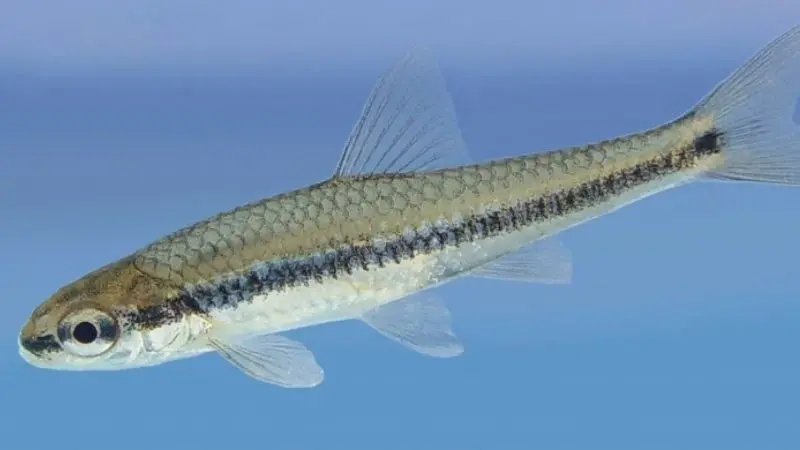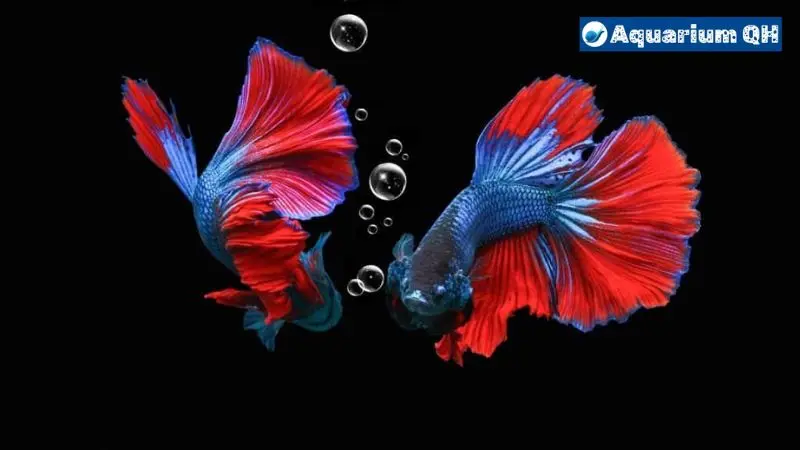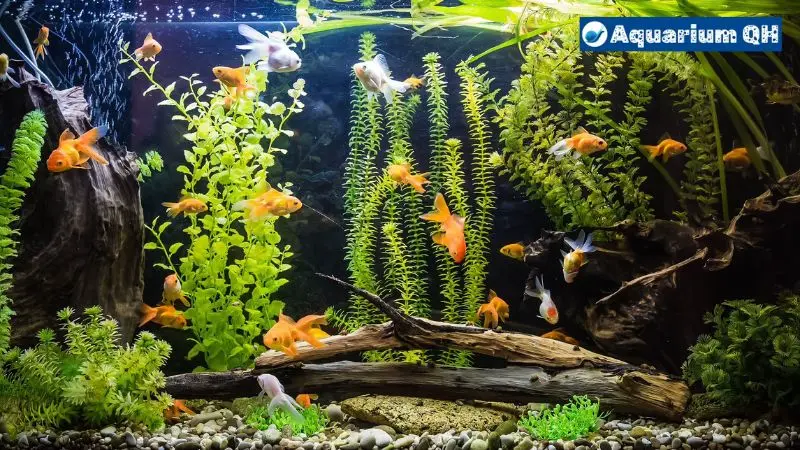What are Minnows?
Minnows are a diverse group of small freshwater fish species that belong to the family Cyprinidae. The term “minnow” actually refers to small fish in general and not a specific species. Minnows are typically 2-8 inches in length. They inhabit lakes, ponds, rivers, and streams across North America.
Some of the most common minnow species kept as bait include:
- Fathead minnows – A popular bait minnow with a stout body. They are very hardy.
- Creek chubs – Larger minnows that can reach 6 inches. Creek chubs are effective for catching larger gamefish.
- Emerald shiners – A slender greenish minnow found throughout the central U.S. Emerald shiners are a popular bait for walleye fishing.
- Bluntnose minnows – A small minnow with an olive-colored back and silver sides. Bluntnose minnows thrive in slow moving waters.
- White suckers – Not a true minnow but often sold as bait. White suckers reach 4-12 inches long.
Minnows breathe through their gills and do not have lungs. They are cold blooded and can thrive in cool water temperatures. Most minnows are omnivores and eat both plant and animal matter. They feed on algae, insects, larvae, and zooplankton. Minnows are prey for larger fish, birds, and other wildlife. They form an important part of the food chain in their ecosystems.
Minnows as Bait

Minnows are one of the most popular types of live bait used for fishing. Their small size makes them an appealing meal for all kinds of freshwater fish like bass, trout, walleye, crappie, and more. Anglers know that fish are more likely to bite hooks baited with live prey versus artificial lures. Minnows trigger instinctual predatory responses when they swim enticingly in the water.
Keeping minnows alive and lively is crucial for anglers who want to use them as bait. It takes more effort than using worms, crickets, or grubs that can simply be placed in a container. Minnows need a specially prepared habitat to survive outside of their natural environment.
When fishing, anglers need to transport buckets of minnows in boats or carry them along docks and shorelines. The minnows must be healthy enough to swim vigorously on the hook and attract fish when cast out into the water. Having minnows die too quickly due to poor care defeats the purpose of using live bait.
Minnow Care Basics
Keeping minnows alive and healthy in a bucket requires attention to some key factors:
-
Clean, Aerated Water: Minnows need clean, oxygen-rich water to thrive. Use a battery-powered aerator or frequently change some of the water to maintain oxygen levels. Remove uneaten food and waste to prevent ammonia buildup.
-
Avoid Overcrowding: Don’t put too many minnows in one bucket. Overcrowding causes oxygen depletion, waste buildup, and stress. Follow general stocking density guidelines of 1 small minnow per quart of water.
-
Control Temperature: Fluctuating water temperatures stress minnows. Keep the water as close to the ideal 60-70°F range as possible. Move bucket to a shaded spot on hot days. In winter, place in a sheltered area or garage. You may need a bucket heater or chiller device to maintain the right temp.
Proper water conditions, stocking levels, and temperature control are key to keeping minnows healthy in a bucket for extended periods. With good care, minnows can live for weeks or even months in a bucket setup before needing to be used or returned to a pond or lake.
Water Conditions

Minnows require specific water conditions to thrive. Aquarium QH has reseach the ideal water temperature range for most minnow species is 65-75°F. Cooler temperatures slow their metabolism while warmer temperatures increase it, both of which can cause stress.
Oxygenation is critical as minnows are sensitive to low oxygen levels. Use an air pump and air stone to maintain dissolved oxygen. Surface agitation from a filter outflow also helps oxygenate the water.
Ammonia from fish waste accumulates quickly in small containers, so frequent water changes are essential. Aim to replace 25-50% of the water daily. Use a gravel vacuum to remove solid waste during water changes.
Test the water regularly with test strips to monitor ammonia, nitrite, nitrate, pH, and hardness. Perform extra water changes if ammonia or nitrite levels become unsafe. Adding a bacterial supplement can help establish the nitrogen cycle to control waste.
Overall, ideal water conditions involve cool, oxygenated water and minimal ammonia, which requires an air pump, frequent water changes, and testing. This provides the clean, comfortable environment minnows need to thrive.
Minnow Bucket Setup
The most important factors for your minnow bucket setup are the type and size of bucket, using a battery-powered aerator, and adding decor like marbles or plants.
Type and Size of Bucket
You’ll want a bucket that’s made of food-grade plastic, as this is safest for the fish. 5-gallon buckets work well for keeping minnows. Make sure the bucket is clean with no soap residues that could harm the fish.
Battery-Powered Aerator
An aerator is crucial to oxygenate the water and keep it circulating. Choose a small battery-powered aerator made for minnow buckets. This will continuously aerate the water to maintain healthy oxygen levels.
Decor
Add some marbles, small rocks, or artificial plants to the bucket. This provides places for the minnows to hide and rest, helping reduce stress. The plants also give additional surface area for beneficial bacteria to grow.
How Many Minnows Per Bucket?

When keeping minnows in a bucket, it’s important not to overcrowd the fish. The general rule of thumb is 1 minnow per quart of water in the bucket.
For example, a 5 gallon bucket could hold up to 20 minnows. However, it’s best to keep the numbers on the lower side to reduce stress on the fish. Aim for 10-15 minnows in a 5 gallon bucket.
Overcrowding minnows causes problems like:
-
Reduced oxygen levels – Too many minnows competing for oxygen makes it hard for them to breathe.
-
Increased ammonia – Fish waste accumulates faster with more minnows, spiking toxic ammonia levels.
-
Aggressive behavior – Crowding leads to nipping, fighting, and fin damage between minnows.
-
Higher stress – Overcrowded conditions are very stressful for minnows.
-
Disease outbreaks – High stocking density makes disease spread quicker.
Bigger buckets and tanks allow for more minnows while maintaining good water quality. A 10 gallon tank could house 30-40 minnows safely. But scale stocking numbers based on bucket/tank size.
The bottom line is not to overcrowd minnow buckets. Stick to 1 minnow per quart of water for best results. Quality over quantity is key when it comes to minnow keeping.
Feeding Minnows
Minnows are omnivores and will eat both plant and animal matter. They should be fed a variety of foods to ensure proper nutrition. Some good options include:
-
Fish flakes – Minnows will readily eat most standard fish flakes that contain proteins, vitamins, and carbohydrates. Use a tropical or goldfish flake. Feed just enough that they can consume it within a few minutes, usually 1-2 pinches.
-
Brine shrimp – Frozen or freeze-dried brine shrimp make an excellent supplement to flakes and provide extra protein. Feed a few pieces 1-2 times per week.
-
Blanched vegetables – Bits of blanched vegetables like zucchini, spinach, and lettuce can add fiber and nutrients. Chop finely and feed a few bits 1-2 times per week.
-
Daphnia/mosquito larvae – Live or frozen daphnia and mosquito larvae are like candy for minnows. They provide enrichment and protein. Feed occasionally as a treat.
Avoid overfeeding minnows, as uneaten food will quickly foul the water. Observe if they are actively eating during feedings. Adjust amounts accordingly if food is left over. Typically feeding 1-2 small pinches of food 1-2 times per day is sufficient.
Transporting Minnow Buckets
When transporting minnow buckets to your fishing spot, proper …




